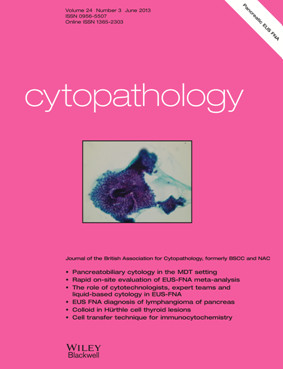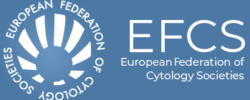 Editor’s Choice: Cytopathology 2013;24(3)
Editor’s Choice: Cytopathology 2013;24(3)
The theme of this issue is pancreatobiliary cytology with special reference to pancreatic endoscopic ultrasound-guided fine needle aspiration. Methods for increasing accuracy include a multidisciplinary team approach the diagnosis, rapid on-site evaluation by pathologists, optimizing cell preparation with liquid-based cytology and cell blocks, and biomedical scientists (cytotechnologists) assessing sample adequacy. These methods individually and in combination enhance the accuracy of diagnosis of pancreatic tumours by cytology, which is becoming the main method of diagnosis of mass lesions at this site and of distinguishing pancreatic adenocarcinoma from the diverse lesions that form its differential diagnosis. Please also look at the case reports and letters to the editor, many of which are on the same or related topics.
Editor’s choice
Review [free access]
R. Dina, M-A Tran-Dang, F. Mauri, M. Gudi, P. Cohen, R. Ahmad, L. Batav, P. Vlavianos and D. Spalding. Pancreatobiliary cytology in the multidiscplinary setting. (Pages 150-158.)
Editorial [free access]
V. Wadehra. The challenge of endoscopic ultrasound-guided fine needle aspiration cytology. (Pages 143-149.)
Other articles on the same theme include:
S. Hebert-Magee, S. Bae, S. Varadarajulu, J. Ramesh, A.R. Frost, M.A. Eloubeide and I.A. Eltoum. The presence of a cytopathologist increases the diagnostic accuracy of endoscopic ultrasound-guided fine needle aspiration cytology for pancreatic adenocarcinoma: a meta-analysis. (Pages 159-171.)
R. Fonseca and M.B. Pitman. Lymphangioma of the pancreas: a multimodal approach to pre-operative diagnosis. (Pages 172-176.)
B. Weynand, I. Borbath, C. Galant, H. Plessevaux and P.H. Deprez. Optimizing specimen collection and laboratory procedures reduces the non-diagnostic rate for endoscopic ultrasound-guided fine needle aspiration cytology of solid lesions of the pancreas. (Pages 177-184.)
